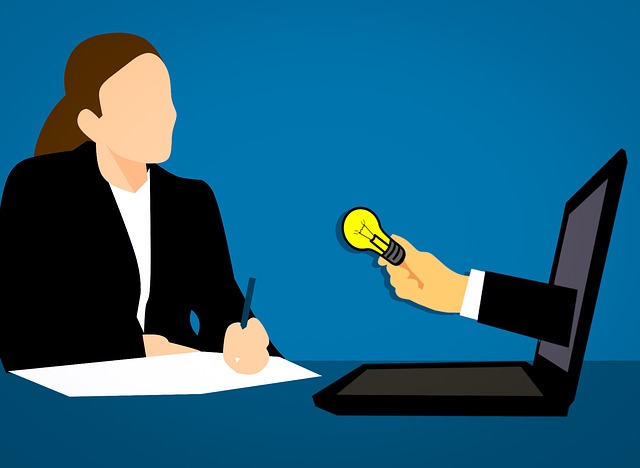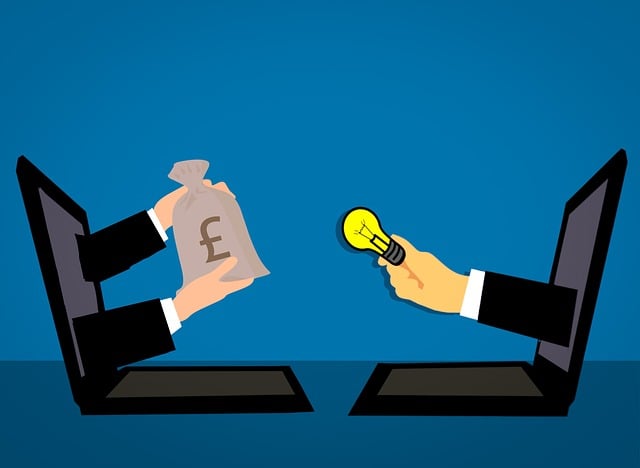Imagine receiving an email that feels like it was crafted just for you. The subject line catches your attention, the content speaks directly to your needs and interests, and the overall experience leaves a lasting impression. This is the power of email personalization – creating unique and memorable experiences that resonate with your audience.
In a world where inboxes are flooded with generic and impersonal messages, standing out and making a connection is crucial. According to a study by DMA, personalized emails have a 29% higher open rate and a 41% higher click-through rate than generic ones.
Think of email personalization as a carefully tailored suit – it fits perfectly, enhances your best features, and makes you feel special. By understanding your audience, personalizing email content, using dynamic content and variables, implementing behavioral triggers, testing and optimizing, and continuously improving, you can create email experiences that go beyond the ordinary.
In this article, we will delve into the strategies and techniques that will help you create email campaigns that are not only effective but also unforgettable. Get ready to transform your email marketing game and leave a lasting impression on your subscribers.
Key Takeaways
- Email personalization creates unique and memorable experiences for recipients.
- Understanding the audience is crucial for effective email personalization.
- Enhancing personalization through dynamic content and variables inserts personalized information and creates different versions of email content.
- Personalized recommendations based on recipient interactions can be achieved through behavioral triggers.
Understand Your Audience
Do you know your audience like the back of your hand? To create unique and memorable email experiences, it’s crucial to understand who you’re targeting.
Targeted segmentation and customer profiling are the keys to achieving this. By dividing your audience into specific segments based on demographics, interests, and behaviors, you can tailor your emails to resonate with each group individually. This allows you to craft personalized messages that speak directly to their needs and desires.
Understanding your audience also helps you anticipate their preferences, enabling you to deliver content that they’ll find valuable and engaging.
So, now that you have a deep understanding of your audience, let’s dive into the next section and explore how to personalize email content.
Personalize Email Content
Transforming your messages into personalized narratives will leave a lasting impression on your recipients. Creative customization is the key to capturing your audience’s attention and making them feel special.
Instead of sending generic emails, take the time to tailor your content to each individual. Use their name, reference past interactions, and incorporate details that show you understand their needs and preferences. By doing so, you create an emotional connection that resonates with them on a deeper level.
This personal touch will make your emails stand out from the crowd and increase the likelihood of engagement and conversion.
In the next section about ‘use dynamic content and variables,’ you will learn how to take personalization to the next level.
Use Dynamic Content and Variables
Utilizing dynamic content and variables elevates the level of personalization in your messages, allowing you to create a more sophisticated and tailored experience for each individual recipient.
Variable customization enables you to dynamically insert personalized information such as the recipient’s name, location, or recent purchase history, making them feel like the email was crafted just for them.
Dynamic content strategies involve creating different versions of your email content based on specific criteria, such as demographic data or past interactions. This allows you to send targeted and relevant content to different segments of your audience, increasing engagement and conversion rates.
By leveraging these techniques, you can deliver emails that feel personalized, relevant, and unique to each recipient, ultimately creating a more memorable experience.
Implementing behavioral triggers takes personalization to the next level, allowing you to respond to specific actions or behaviors of your recipients seamlessly.
Implement Behavioral Triggers
By implementing behavioral triggers, you can seamlessly respond to specific actions or behaviors of your recipients, delivering tailored and engaging emails that leave a lasting impression.
Behavioral segmentation allows you to categorize your subscribers based on their interactions with your emails, such as opens, clicks, purchases, or website visits. This segmentation enables you to create personalized recommendations that resonate with each individual’s interests and preferences.
By analyzing their behavior, you can understand their needs and desires, allowing you to craft emails that provide value and relevance. Whether it’s suggesting similar products based on their previous purchases or offering exclusive discounts for abandoned carts, behavioral triggers enable you to connect with your audience on a deeper level.
Now, let’s move on to the next section and explore how you can test and optimize your email campaigns.
Test and Optimize
Are you looking to create a truly personalized and memorable experience for your email subscribers?
Then it’s time to put your strategies to the test! A/B testing different personalization strategies can help you understand what resonates with your audience and what doesn’t.
By analyzing metrics and making data-driven decisions, you can optimize your email personalization efforts and ensure that every message you send is tailored to perfection.
So don’t settle for anything less than outstanding – test, analyze, and optimize to create a truly unforgettable email experience for your subscribers.
A/B Test Different Personalization Strategies
Imagine the impact of testing different personalization strategies and creating unique and memorable experiences for your audience. By utilizing email segmentation and targeting specific customer groups, you can ensure that your messages resonate with each individual recipient.
Avoid common personalization pitfalls such as using generic greetings or incorrect customer information, as these can lead to a negative impression and decreased engagement. Instead, tailor your emails to each customer’s preferences, interests, and purchase history.
Experiment with different personalization techniques, such as dynamic content, personalized subject lines, or targeted offers, and measure the results through A/B testing. Analyze metrics and make data-driven decisions to continuously improve your personalization efforts.
By providing your audience with tailored and relevant content, you can create a lasting impression and drive higher engagement levels.
Transitioning into the next section, analyzing metrics will help you understand the effectiveness of your strategies and enable you to make data-driven decisions for future improvements.
Analyze Metrics and Make Data-Driven Decisions
Utilizing email segmentation and targeted messaging allows you to analyze metrics and make data-driven decisions that can greatly enhance the effectiveness of your personalization strategies. By analyzing trends and identifying patterns in your email marketing metrics, you can gain valuable insights into how your audience is responding to different personalization tactics. This data-driven approach empowers you to optimize your email campaigns, ensuring that you are delivering the right message to the right people at the right time.
To help you visualize the impact of analyzing metrics, consider the following table:
| Metric | Email Personalization Strategy |
|---|---|
| Open Rate | Personalized Subject Lines |
| Click-Through Rate | Dynamic Content |
| Conversion Rate | Personalized Recommendations |
By analyzing these metrics, you can determine which personalization strategies are most effective in driving engagement and conversions. This allows you to continuously improve and evolve your email personalization efforts, ensuring that you are always delivering unique and memorable experiences to your audience. So, let’s dive into the next section and explore how you can further enhance your email personalization strategies.
Continuously Improve and Evolve
Keep evolving and improving your email personalization to create unique and memorable experiences. In order to achieve long-term growth and stay ahead of the competition, it’s crucial to constantly innovate and explore new techniques. Don’t be afraid to think outside the box and experiment with different approaches.
Analyze the data you collect from your metrics and use it to make data-driven decisions that’ll lead to better personalization strategies. Continuously monitor the performance of your emails and be open to making adjustments and refinements along the way. Embrace a mindset of constant improvement and adaptability.
Stay up to date with the latest trends and technology advancements in email marketing to ensure that your personalization efforts are always on the cutting edge. Remember, the key to success lies in your ability to evolve and adapt to the ever-changing landscape of email marketing.
Frequently Asked Questions
How can I effectively segment my email audience to ensure personalized content?
To effectively segment your email audience and ensure personalized content, employ a range of effective email personalization techniques.
Start by analyzing your audience’s demographics, preferences, and behavior. Use this data to create targeted segments and tailor content specifically to their interests and needs.
Craft compelling subject lines that grab attention and personalized greetings that make recipients feel valued.
Leverage dynamic content and automation to deliver relevant messages at the right time.
These strategic strategies for personalizing email content will leave a lasting impression and drive engagement.
What are some best practices for creating engaging subject lines that grab the recipient’s attention?
Crafting compelling subject lines is a game-changer when it comes to email marketing. By optimizing email personalization strategies, you can improve email deliverability and enhance open rates.
To increase customer engagement, leverage customer data and implement dynamic content in emails. Personalize email CTAs for better conversions and incorporate storytelling to captivate your audience.
Don’t be afraid to use emojis in subject lines for increased engagement. Utilize A/B testing and leverage AI and machine learning for advanced email personalization.
Are there any legal considerations to keep in mind when personalizing email content?
When personalizing email content, it’s crucial to consider legal aspects such as data privacy and compliance regulations. Protecting your recipients’ information should be a top priority.
Ensure that you obtain proper consent and handle sensitive data securely. By adhering to these legal considerations, you not only maintain trust with your audience but also avoid potential penalties or legal issues.
Safeguarding privacy and complying with regulations is a strategic and persuasive approach that establishes your brand as trustworthy and reliable.
What are some ways to automate the process of sending personalized emails based on user behavior?
Automated targeting and behavioral triggers are powerful tools for sending personalized emails based on user behavior. By utilizing automated targeting, you can segment your audience and tailor your messages to specific groups.
Behavioral triggers allow you to send emails triggered by specific actions or events, such as abandoned carts or completed purchases. This automation not only saves time and effort but also ensures that your emails are relevant and timely, creating a memorable experience for your users.
How can I measure the success of my email personalization efforts and make data-driven improvements?
To measure the success of your email personalization efforts and make data-driven improvements, you need to focus on measuring personalization success and continuously improving your personalization strategies.
By analyzing metrics like open rates, click-through rates, and conversion rates, you can gauge the effectiveness of your personalized emails. Use A/B testing to experiment with different personalization tactics and track the results.
Additionally, gather feedback from your audience and use it to refine your personalization strategies for even better results.
Conclusion
Congratulations! You’ve unlocked the secret to crafting email campaigns that leave a lasting impression. By embracing the power of personalization, your messages will transcend the boundaries of ordinary communication.
Your audience will be captivated by the sheer brilliance of your tailored content, as if you possessed a mystical ability to read their minds. With every dynamic variable and behavioral trigger, you’ll have them hooked, eagerly awaiting your next email.
So, embrace the art of email personalization and prepare to witness the awe and admiration of your audience. Let your emails become legendary!








